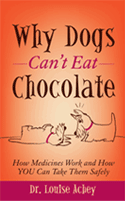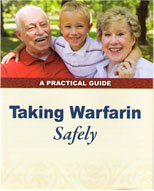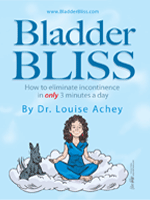Archive for October, 2014
Q: On the bottle of my thyroid medicine it says to take it in the morning on an empty stomach. Sometimes I forget to take it before I eat breakfast, and end up missing that day’s dose. Is there something I can do to help me remember to take it before I eat?
Although most medicines should be taken WITH food, not without it, there are exceptions. Thyroid medicine is usually absorbed into your body more consistently and completely if it is taken at least 30 minutes before a meal. However, if this is just not convenient for you and you find yourself skipping your pill because you’ve had to go ahead and eat, then go ahead and take it. The thyroid pill won’t make you sick if you slip up and take it with your breakfast. The most important thing about taking a thyroid pill is being consistent in the way you take it. Whether you take it before, during or after a meal, just make sure you are taking it the same way each time.
Some people say, “I barely have room for breakfast because of all the pills I’m taking. If you think some of your pills are making you sick to your stomach, you are not alone. As a pharmacist, one of the most common complaints I hear is, “These pills make me sick!” Queasiness, nausea, stomach pain or cramping of your stomach or intestines – what doctors call “gastrointestinal distress”, or “GI distress” – is THE most commonly reported side effect reported with medicines. In fact, people have reported getting nauseated or experiencing some type of stomach upset with every single prescription medicine ever prescribed.
If there were a Hall of Fame of drugs that cause nausea and vomiting, the medicines most likely to be in there would be antibiotics, pain medicines, and cancer chemotherapy drugs.
Here are some tips to help reduce the GI distress and risk of vomiting from these and other medicines:
Tip #1: Take your medicine with food in your stomach or a full glass of water or milk. Taking it just after finishing your meal instead of at the beginning of it is even better, as there is more food in your stomach to dilute out any distressing effects on your innards.
Tip #2: If an antibiotic is causing nausea or vomiting, ignore any advice about taking the medicine on an empty stomach (gasp!) and take it with crackers or a snack, but not a full meal. Don’t worry, your stomach won’t blow up! You’ll lose a little of the antibiotic because of the food, but it’s much better to get most of your medicine inside you than to upchuck the whole thing before it even has a chance. If you try this and it still doesn’t help, contact your doctor as soon as possible. An antibiotic can’t help you if you can’t keep it down, and delaying treatment can lead to serious consequences.
Tip #3: Take the medicine at night, so you sleep through the queasiness. This is helpful with oral contraceptives or with prenatal vitamins because “morning sickness” during the first trimester of pregnancy can make it challenging to keep food and vitamins down. It can also be helpful with pain medicines.
Tip #4: Ask your pharmacist if there is a delayed-release or specially coated formulation designed to minimize stomach distress that can be requested from your doctor.
Tip #5: Ask your pharmacist if you could safely split your pills into more than one dose and take them several hours apart, like with breakfast and dinner. Some pills can be split safely; others need to be switched to a smaller size pill and given in separate doses.
Chemotherapy drugs top the list of drugs that cause severe queasiness and vomiting. You’re more likely to experience nausea or vomiting during chemotherapy if you are younger than 50 years old, are female, have had nausea during a pregnancy, are prone to motion sickness, or have had nausea during previous chemotherapy. Depending on the treatment regimen, multiple anti-nausea medicines are used together, including pills, dissolving or melt-in-your-mouth tablets, skin patches, rectal suppositories, and injections.
Tip #6: Anti-nausea medicine works best when taken ahead of time. If you’re planning to go salmon fishing on a charter out of Westport, it’s best to take your motion sickness medicine at least 30 minutes before boarding the boat, not when you realize you’re about to heave your breakfast over the side.
If you do vomit after taking your medicine, what should you do? If it’s an antibiotic or pain medicine, go ahead and try it again, but make sure you’re taking it with food and a full glass of fluid. If you end up losing your medicine a second time within 30 minutes, contact your doctor, because if you can’t keep your antibiotic or your pain medicine down, it won’t be able to help you.
If it’s been more than 30 minutes since swallowing your medicine before you vomited, then you may have gotten enough medicine absorbed that taking another dose right away could be an overdose. If your medicine is for your heart, your blood pressure, or anxiety, don’t take another dose right away. Call your doctor or pharmacist if you have any questions. If you take that medicine twice a day, wait until your next dose before trying to take it again.
Leave a Comment
Kellie came into my pharmacy late one Thursday night nearly 8 years ago now, but I still remember it clearly. Her roommate Connie needed something for allergies, and Kellie wanted to ask us what we could recommend. Connie had started sniffling and sneezing and after 2 months of misery Kellie bullied her into going to the doctor to find out why. Connie had received terrible news: she was allergic to cats. Connie had 2 cats, Jessie and Sophie who were like her kids and even slept with her every night, up by her head. She wouldn’t hear of kicking Jessie and Sophie out of bed, let alone getting rid of them. As Kellie explained to me, “She even dresses them up for Halloween and Christmas! Is there anything she can take to help her stuffy nose and sneezing? She’s refused to go back to that doctor.” My 3 Scotties are envious of those cats – my husband is a very light sleeper and our dogs sleep in our mudroom so that everyone gets their shut-eye.
I knew a pharmacist who graduated from veterinary school and then developed a serious allergy to both cats and dogs within his first year of practice. He decided to leave the world of animal medicine entirely and became a pharmacist instead, graduating just a couple of years after me.
What did I have back then to recommend for Connie? Just a couple of antihistamine pills and a couple of nose sprays. Thankfully, today is a different story. Not only do we have Zyrtec® and Allegra® now available without a prescription, the FDA just approved a nose spray that is VERY effective against allergies. Hooray!
Today Connie would have a choice of 4 or 5 antihistamine pills: Benadryl® (diphenhydramine) is powerful but causes drowsiness and has to be taken 3-4 times daily; Chlor-Trimeton®, (chlorpheniramine) is another older antihistamine which also causes drowsiness. One of my favorites has always been Actifed®, but now you should only buy it behind the counter because it contains the decongestant pseudoephedrine (Sudafed®).
Connie would have newer antihistamines to try: Claritin® (loratadine), Zyrtec® (cetirizine) and Allegra® (fexofenadine) all have had great success as prescription antihistamines, are taken only once daily and are all available now over the counter.
In addition, now there’s a real game-changer for Connie’s allergies: Nasacort AQ 24 Hr nose spray. Nasacort AQ® has triamcinolone in it, which is related to hydrocortisone and prednisone. It’s the first cortisone-containing nose spray to become available without a prescription, and one of the most effective ways ever to treat allergic symptoms that involve the nose, like Connie’s sneezing, sniffling and stuffiness.

Up until now, the only nose sprays for allergies that were non-prescription were not really very helpful. Afrin® (naphazoline) and Neo-Synephrine® (phenylephrine) sprays work by causing the blood vessels in your nose to shrink, relieving the stuffiness that an allergy can trigger. Trouble is, your relief is short lasting. Some people can use these intermittently for months as a time and manage to avoid getting rebound stuffiness, while others find their nose spray stops working for them after only 3 days. If you have high blood pressure or a heart condition, you should avoid these nose sprays entirely, as they can increase your blood pressure.
Nasalcrom®, another nose spray available for allergies, contains cromolyn sodium which blocks allergic symptoms but only if it is used BEFORE you get exposed to whatever you’re allergic to. Nasalcrom® also needs to be used 3-4 times daily. Unlike Afrin® or Neo-Synephrine®, Nasalcrom® can be used safely in children and can be used for years without losing its effectiveness.
Nasacort AQ® 24 Hr contains a cortisone called triamcinolone which works a lot like prednisone to quell allergic symptoms like nasal congestion, runny nose and sneezing. It lasts for 24 hours and just one or two sprays a day can control allergy symptoms safely for years and it’s safe to use in children. Kids as young as 2 years old can safely use Nasacort AQ 24 Hr.
You can also combine Nasacort AQ®24 Hr with any oral antihistamine pill for even more relief. With 2 sprays of Nasacort AQ® 24 Hr once a day plus Zyrtec® or another daily allergy pill, today Connie could control her symptoms and keep her cats, too, even letting them continue sleeping with her. My Scotties would be SO jealous!
Leave a Comment
Q: Last week I saw an advertisement for getting flu shot at a local pharmacy chain. It was only the first week of September, but they were already offering flu shots. Is that the best time to get vaccinated against the flu?
The peak flu season in the United States runs from October through March, with most infections occurring in February. After getting a flu shot it takes about 2 weeks to become fully effective and gives you the best protection for the next 12 weeks, after which your flu protection slowly decreases. Will one flu shot last you an entire flu season, even if you get it in September? If you are young and healthy, the answer is yes; one shot will provide you with good protection for the entire flu season.
Unfortunately, older Americans do not get as much protection against the flu from flu shots. The Center for Disease Control (CDC) recommends getting a flu shot anytime after the vaccine becomes available because they don’t want to miss any opportunity for most Americans to get vaccinated. But if you are over 60 and it’s convenient for you, it might be better to wait and get your shot a little later to match up your 12 weeks of best protection from the vaccine with the peak month of illness from influenza, which is typically in February.
If you are over 65, it’s especially important you get a flu shot. Every year between 5-20% of Americans become ill with influenza. Those age 65 and older have an increased risk of serious complications from influenza such as pneumonia, dehydration and worsening of chronic conditions such as lung disease, congestive heart failure and diabetes. 90% of the deaths associated with influenza occur in the over-65 age group.
One of the biggest challenges to preventing deaths from influenza is just keeping up with it. Measles, mumps, and chicken pox viruses have stayed pretty much the same over the decades we’ve had vaccines against them. Not so with influenza; it keeps changing its shape, making it harder for our immune system to detect and respond to. The World Health Organization (WHO) keeps track of influenza patterns across the world with centers in Tokyo, Beijing, Melbourne, London and Atlanta.
Most new types or strains of influenza start in China, where farmers live among the animals they raise. Various influenza strains infect geese, chickens, ducks, pigs and humans, sometimes without any outward signs of illness. While inside its host, the virus reproduces itself millions of times. Small errors can occur during the replication process and instead of an exact copy the virus may end up slightly different. If the new version proves to be better at causing disease than the original strain, it replaces it, introducing a more powerful strain into the world.
If two different strains infect the same host, it’s possible for them to come in contact with each other as they reproduce. If part of one strain accidently swaps part of itself with another strain instead of with itself, a “new” influenza strain is created. Most scientists believe the next pandemic will be from an influenza virus that was accidentally transformed like this.
Most human influenza is caused by 2 strains, called A and B. The A strain causes more severe symptoms and is associated with pandemics. The particular strains chosen for each season’s flu vaccine are selected because they are most likely to infect you, to cause you serious illness and can be grown into a commercial vaccine in time for flu season. Traditionally, influenza vaccines have had 3 strains and are called trivalent: two A strains and one B strain but starting last year there are vaccines with 4 strains, two each of A and B.
Influenza vaccine has been traditionally grown in eggs, but some of this year’s vaccine was produced using newer techniques. Flublok® uses recombinant technology to grow influenza virus completely without eggs and is safe for people who have a severe egg allergy. Another vaccine is grown in cell culture, which is exciting because it produced vaccine more rapidly than the traditional way. Having more rapid methods for producing influenza virus would be of great value during influenza pandemic.
There were no new strains of influenza circulating this past year, so this fall’s flu vaccine is the same formula as the ones used last year. Because your protection from last year’s vaccination has faded, be sure to get another flu shot. There’s more for you about the flu at http://www.cdc.gov/flu/keyfacts.htm.
Leave a Comment



